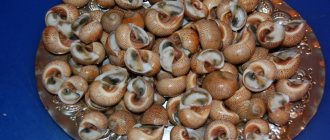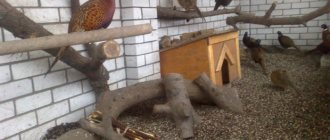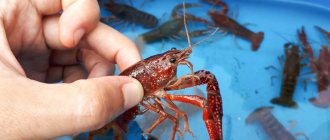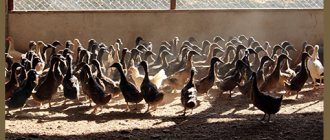- Wooden box. To populate the first batch of individuals, it will be enough to make a box measuring 2 by 1 meter. It is necessary to install a tray at the bottom for the outflow of fertilizer, and cover the top with a lid with holes for ventilation.
Old refrigerator. Installed at an angle, with the lid up. It is necessary to provide air to the worms by drilling holes in the door.
Business plan for opening a yarn production, more details here;
Soil requirements
The profitability of the worm farm depends on the condition of the top layer of soil. In order for your business to operate as efficiently as possible, you need to monitor:
- humidity;
- acidity.
The moisture level in the soil should be between 75-80%. The standard acidity for comfortable living of individuals is 6.5-7.5 pH.
Note! Low acidity of the soil will lead to the death of the worms. If dead individuals are found, sawdust or dry plant stems should be added to the nursery. To reduce acidity, the earth is mixed with chalk.
What to feed?
Food for worms is waste from the process of decay:
- trimming, peeling vegetables;
- crushed bakery products;
- food waste;
- diluted kefir and sour cream;
- egg powder.
It is not recommended to give worms meat scraps, citrus fruits, large pieces of vegetables and fruits.
The benefits of worms
In order to understand the likelihood of generating income, you need to understand how useful a simple earthworm is and what you get with its help, besides fishing bait.
At school we were told that the soil should be loose and talked about the importance of soil animals. Time passed and everything was forgotten, but in vain. Remembering the lessons of zoology, we state that worms process a variety of waste of plant and animal origin. Their diet includes algae, larvae, bacteria, fungi and other organic components. During the digestion process, the animal converts soil debris into humic acids, which come into contact with minerals located in the ground and, as a result, calcium humates are formed. These components make the soil loose and saturated with air.
During the processing process, the soil is saturated with enzymes, amino acids, vitamins, and biologically active substances that promote the growth and development of plants. And it is the worms that perform the main function of enriching the mixture.
The business is to create comfortable conditions for the reproduction of animals, and in return they give the best fertilizers. In addition, they are used as biomass for feeding animals, and, of course, for fishing.
Breed in what?
To breed worms, you will need to organize their habitat. The following containers can be used:
- Cardboard boxes act as the cheapest containers, which are made of a material that allows air to pass through well and does not retain moisture. The downside of this container is its fragility (if it wears out, it needs to be replaced; worms also feed on cardboard).
- Wooden boxes. You can make it yourself or buy it in a store. An important feature of the box is the presence of a lid, as well as holes for ventilation.
- Plastic container. This includes flower pots and food containers. They also need to be pierced in several places for air circulation.
- Cooling chamber.
- Vermicomposter is the most expensive nursery for worms. It has a number of advantages: the presence of several compartments, as well as a ventilation system, a place for liquid drainage, etc.
Types of worms
There are many varieties of subfoliates, all of them are extremely beneficial for the soil and are deservedly called soil ecologists. For business, you can breed any of the species, but BBQcash experts recommend paying attention to several of the most popular and easy-to-maintain ones.
Earthworm (Prospector)
An invertebrate with a smooth body consisting of ring segments complemented by small brushes that serve for movement. The cylindrical animal grows up to 30 cm in length. The back is dark, convex, the belly is flat and pink. This species is classified as hermaphrodite, however, the reproduction process occurs through mating. In the front of the body there is a small extension containing an organ that produces an adhesive substance, which allows the formation of a protective cocoon for laid eggs. Thus, the juveniles are protected from the negative effects of the environment until they are born. The raincoat lives up to 4 years, has no organs of vision and touch. Despite this, it reacts to light and touch through the nervous system and reflexes. The animal is able to smell, and if parts of its body are lost, it regenerates.
The most famous species, adapts well to natural conditions. The reproduction process is a little slower than others, but not significantly. Buyers prefer it.
Red (California) worms
This species reproduces quickly and can reproduce up to 1,500 of its own kind in a season. The average life expectancy is up to 16 years, with puberty starting at 3 months. The main and basic requirement for living conditions is warm soil.
They produce the highest quality fertilizer, but are capricious in nutrition compared to their counterparts. They are afraid of temperatures dropping to +10 °C.
Dendrobens
A specially bred hybrid for fishing. Differs in large sizes. The eggs can withstand sub-zero temperatures and have proven to work well in loosening and enriching the soil. Their length is up to 12 cm. They live 12 years or more.
Interestingly, one such worm can live on a hook in water for up to 10 hours, and you can catch up to three fish with it.
Mealworms
The best producers of humus and worm tea. They are unpretentious in nutrition, reproduce quickly and are resistant to temperature changes.
When starting your own business, it is important to know that it is impossible to breed different types of worms within the same container. Biological components secreted by one animal can be harmful to another.
Selling worms
Before creating a business, you need to figure out which category of buyers will be interested in the product. Not only pets, but also waste products are in great demand. Vermicompost, formed as a result of the activity of individuals, is widely used when planting crops as an environmentally friendly and effective fertilizer.
Worm tea is in demand. It is used to water outdoor and indoor plants. The main audience for buying worms are:
- summer residents, gardeners, they order humus and fertilizers from the manufacturer that can increase crop yields and soil fertility;
- fishing store owners purchase products directly from breeders and save a lot of money;
- owners of fish farms who need to purchase large quantities of feed;
- owners of pet stores who provide worms as food to fish, birds, and animals.
The lifespan of earthworms and red worms ensures a stable demand for them. Individuals are purchased for various reasons - for fishing, sale. Fishing farms bring good income to the owner, since they purchase large quantities from several suppliers at once. Pet store owners also need to buy in bulk. Gardeners and gardeners use humus.
Breeding worms for fishing at home can bring good and stable income. To create your own business you will not need a lot of investments and expenses.
Worms comparison chart
| Worm | Repeatability per season | Lifespan | Photo |
| Rain | 1000 | 4 years | |
| Californian | Up to 1500 | 16 years | |
| Dendrobena | – | 12 years | |
| Mealworm | 130-350 eggs from one female | Egg (2 weeks) -> larva (2-4 months) -> pupa (2-3 weeks) -> beetle (up to 3 months) |
How to grow worms at home
You can start a business even in an apartment; pets do not smell, do not make noise and do not create problems. Therefore, a place is allocated in a quiet corner, where there is no vibration and the air temperature does not rise above +30 °C. It is also important not to keep the worms in the cold.
When planning a serious enterprise for breeding subfoliates, you should prepare with documentation. First of all, they open an individual enterprise, then sign a contract for garbage removal and confirm ownership of the land. No additional paperwork is required.
Where to get worms and which ones are better
Selecting breeders for breeding is not difficult. You definitely won’t have to buy them; it’s better to stick with the local variety of earthworms. The collected material easily adapts to life in the nursery, is not picky about food and has good immunity to disease.
When the species is determined, the question arises of where and how to get the first biomaterial for breeding. To do this, create a trap in any place where animals live. Having dug a shallow hole, fill it with humus or manure, slightly moistening it. Cover the surface with cardboard or plywood and wait a week. After 7 days, the first residents will appear in the trap; they are carefully transferred to a box or other container prepared for pets, along with the contents of the pit. In order for a business to start generating income, up to 1000 pets are needed for every square meter of soil.
You can purchase several families from other worm farms or online. One livestock includes up to 1500 individuals. Before paying for your purchase, you need to look at it; the animals must be rich red in color and show mobility.
What you will need
Before you bring your pets, you need to find a place for them to live. Depending on the size of the planned business, the premises vary from a balcony to a garage or even a separate building.
In winter, the worms hibernate and the reproduction process stops, accordingly, and the business will not generate income. If you need a year-round source of sales, then you should take care of heating the premises.
It is equally important to stock up on containers for keeping animals, because the growing livestock will need to be resettled.
What to breed in
The choice of container depends entirely on the desires and capabilities of the breeder. The main thing is to maintain the size of the box so that 1-3 families fit in it; the area of such a tank should be close to 1.5-2 square meters. Height - 40 cm.
Cardboard boxes are a good place to hatch worms, they are environmentally friendly and suitable for animal food. If the container becomes unusable, it is easy to replace.
Diagram: how to keep worms
Wooden boxes can be of different sizes; you need to make ventilation holes on the sides and be sure to provide a lid. In such conditions, humus and worm tea ripen well. The container is installed at a slight angle and an outlet is made for the liquid, from there it will be possible to drain the moisture. The tilt can be achieved by shortening the legs on one side.
In addition to containers, the following items of agricultural equipment will be needed to keep worms: scales, pitchforks, shovel, wheelbarrow, bucket. sieve. For home improvement, thermometers for soil and air, as well as a device for measuring soil acidity, are useful.
To make the worm feel comfortable, you need to choose the right soil mixture. ½ of the container is filled with pieces of cardboard mixed with humus. Ambient humidity 80%. To check the level, you don’t need any instruments; just take a handful of soil in your hand and squeeze it; if you can squeeze out a few drops of moisture, then the soil meets the standard.
Moving pets is easy, but when moving in, many mistakes are made. Having prepared the soil for the worms, you need to let it stand for a couple of days, during which time processes take place that result in the release of harmful ammonia. After a few days you can move in the animals. Invertebrates live in the middle layers, humus (the product of their vital activity) is located below, and liquid (so-called tea) settles to the bottom. When settling a family, they dig a hole, transfer future residents into it along with a soil mixture from their native places, and cover the surface with cardboard. If after a few days the worms crawl away, it means that adaptation is complete and food can be added.
Maintaining certain indoor parameters will also help produce healthy worms. The air temperature can fluctuate in the range of +18…+25 °C. The brightness of the light is 60 W per 20 square meters. Light ventilation is necessary. Water for moistening the soil mixture with worms should be settled, rain or melt. Chlorinated liquid makes pets feel unwell.
It is worth taking care of protection from natural enemies, such as rodents, moles, and rats.
How and what to feed
The diet of worms is not very special. They eat spoiled vegetables and fruits and other food waste. It is important to know what can be given to pets and in what consistency. In addition, a new portion of food is added only after the previous one is completed, otherwise old foods will begin to deteriorate, releasing harmful substances and increasing the acidity of the soil.
The worms are fed approximately once a week. In order to check whether the pets are hungry, they wet the paper and put it in a container; if the animals eat it, then you can add a new portion of food.
The crushed products are laid out in a thin layer and covered with earth on top so that there is no smell in the room.
Allowed
Stale bread, tea leaves, coffee grounds, crushed egg shells, banana and potato peelings, boiled vegetables, tops of fresh vegetables, cabbage and lettuce, chicken and cow waste products.
Forbidden
Citrus fruits and their peels, dairy products, meat products, hard vegetables (you can put them through a chopper, then you can). Manure and droppings must be fermented.
What you need to breed worms
To invest in worm breeding yourself, you should provide the conditions and equipment you will need:
- temperature from 8 to 29 above zero, the exact figure depends on the type of animal;
- moderate humidity in vermicontainers;
- containers - plastic or wooden boxes;
- vermichay to start breeding, soil, drainage;
- power supplies.
Accordingly, cultivation can be organized in containers, embankments, trenches - in an apartment, garage/shed, or on a personal plot.
In the case of renting vermicontainer cells from the QI incubator company, you will not need anything other than a rental fee.
What can you sell from a vermifarm?
The products from the worm farm are varied and the first results can be obtained after just six months.
To create a comfortable environment, animals are given regular inspections. Once every 5 months, carefully remove the top layer of soil, take out the pets and sort them by size. Small individuals are released back into the ground, while large ones are prepared for sale.
Also remove the bottom layer of humus and collect the liquid. These by-products are highly valued by gardeners as pure natural fertilizer. Sales can be agreed upon in advance or buyers can be found later. The product does not deteriorate and can remain in containers for a long time.
Profits from the worms come from fish farms, which are happy to buy clean pets. In addition, live food sells well in pet stores. By concluding agreements with several large companies, you can begin expanding your business.
What and when to feed worms
When the first worms appear in the box, you need to start feeding them. At first, you need to feed a little, 15-25 grams per box.
The fry's first food should be mixed feed, ground in an electric coffee grinder. Any combination feed intended for poultry, pigs or cattle is suitable.
The first brood should be fed once every four days, in small portions, until four weeks of age.
First brood
After about four to five weeks, all the fry should hatch. After five weeks, you need to select the fry and place them in separate, pre-prepared boxes, three to five hundred units each.
Profitability of business with worms
Calculating the expected profit is simple, suppose 10,000 rubles were spent on purchasing equipment and several families of animals.
The average growth and reproduction time is 6 months. Costs during this period are only for lighting and heating the premises; food for invertebrates can be obtained from the nearest supermarket, having agreed on the removal of food waste.
One individual costs, depending on the region, from 0.25 to 1 ruble. It is also worth noting that the business has a pronounced seasonality and in the spring and summer the price of animals rises.
Based on the maximum, that is, a ruble per piece, to summarize, for 1000 worms you receive an equivalent amount in rubles. Accordingly, raising a million invertebrates provides a good income.
Let's consider how long it will take to pay back. Each individual Californian red worm produces from 500 to 1500 offspring. Animals reach sexual maturity by 3 months, respectively, one family of 1000 sexually mature individuals can potentially increase to 1,000,000 per season.
It is important to understand that for such a number of animals you will need a place and living conditions.
To summarize, we can say that a worm farm pays for itself tenfold over the course of a season.
Registration and registration of business
The registration procedure takes place in accordance with Federal Law No. 129 F3. Today, this is done by the Federal Tax Service, where the necessary documentation is submitted, and within 5 working days, a certificate of state registration and registration with the tax authorities is issued.
Next, the package of documents is forwarded to the statistics department, where a code is assigned, and extra-budgetary bodies are notified of the registration date and number.
Required documents:
- Application for state registration signed by the applicant.
- Passport and its notarized copy.
- Receipt for payment of state duty.
Documentation can be submitted to the Tax Authorities in person or by registered mail, attaching a list of the contents.
Also, you need to register with the Social Fund. fear and open a bank account. The procedure for registering a worm breeding business is formalized on a general basis, in accordance with the Federal Law.
Advantages and disadvantages
Breeders say there are virtually no flaws in the worm business. Invertebrates are unpretentious, do not get sick, and do not require medical attention. They feed on organic waste, which is free and always available.
The rate of reproduction of families with proper care is so high that expansion of production becomes necessary even before the completion of the first season.
You can start a business without any investment at all by collecting biological material in a nearby park and gradually increasing your turnover, spending your profits on the purchase of the necessary equipment.
Benefits and Risks
Worm breeding can be either an independent type of business or an important component of a full-cycle farm. In any case, this business has a number of advantages:
- does not require large investments;
- simple and labor-intensive technology for breeding worms;
- low level of competition in the market.
If we consider the vermibusiness in a full-cycle farm, we can highlight several more advantages:
- the use of vermicompost and vermicelli to increase the fertility of your own soil;
- recycling;
- feeding the bird.
This type of business is most often successful, but there are certain risks in it. Firstly, some entrepreneurs are faced with the problem of selling vermin products. A thorough study of possible markets in your region at the stage of business planning and choosing the type of worms for seedlings will help solve this problem. The fact is that some worms are better suited for reproduction, while others are better suited for producing vermicompost.
Secondly, failure to maintain the conditions for keeping the worms can result in low activity and even death of invertebrates. Which will entail monetary losses. Therefore, before starting vermiculture, you should carefully study all the rules and subtleties of keeping exactly the type of worms that will be used.











